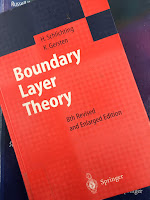Richard Horton, editor-in-chief of The Lancet, seconds this call for better physics education. He concludes that “Young physicists need to be nurtured to ensure a sustainable supply of talented scientists who can take advantage of the opportunities for health-related physics research in the future. Schools, indeed all of us interested in the future of health care, should declare and implement a passion for physics. Our Series is our commitment to do so.” Bravo! Below I reproduce the abstracts to the five articles in the Physics and Medicine series. In brackets I indicate the chapter or section in the 4th edition of Intermediate Physics for Medicine and Biology where a particular topic is discussed.
Physics and Medicine: a Historical Perspective
Stephen F Keevil
Nowadays, the term medical physics usually refers to the work of physicists employed in hospitals, who are concerned mainly with medical applications of radiation, diagnostic imaging, and clinical measurement. This involvement in clinical work began barely 100 years ago, but the relation between physics and medicine has a much longer history. In this report, I have traced this history from the earliest recorded period, when physical agents such as heat and light began to be used to diagnose and treat disease. Later, great polymaths such as Leonardo da Vinci and Alhazen used physical principles to begin the quest to understand the function of the body. After the scientific revolution in the 17th century, early medical physicists developed a purely mechanistic approach to physiology, whereas others applied ideas derived from physics in an effort to comprehend the nature of life itself. These early investigations led directly to the development of specialties such as electrophysiology [Chpts 6, 7], biomechanics [Secs 1.5–1.7] and ophthalmology [Sec 14.12]. Physics-based medical technology developed rapidly during the 19th century, but it was the revolutionary discoveries about radiation and radioactivity [Secs 17.2–17.4] at the end of the century that ushered in a new era of radiation-based medical diagnosis and treatment, thereby giving rise to the modern medical physics profession. Subsequent developments in imaging [Chpt 12] in particular have revolutionised the practice of medicine. We now stand on the brink of a new revolution in post-genomic personalised medicine, with physics-based techniques again at the forefront. As before, these techniques are often the unpredictable fruits of earlier investment in basic physics research.
Diagnostic Imaging
Peter Morris, Alan Perkins
Physical techniques have always had a key role in medicine, and the second half of the 20th century in particular saw a revolution in medical diagnostic techniques with the development of key imaging instruments: x-ray imaging [Chpt 16] and emission tomography [Secs 12.4–12.6] (nuclear imaging [Secs 17.12-17.13] and PET [Sec 17.14]), MRI [Chpt 18], and ultrasound [Chpt 13] These techniques use the full width of the electromagnetic spectrum [Sec 14.1], from gamma rays to radio waves, and sound [Secs 13.1–13.3]. In most cases, the development of a medical imaging device was opportunistic; many scientists in physics laboratories were experimenting with simple x-ray images within the first year of the discovery of such rays, the development of the cyclotron and later nuclear reactors created the opportunity for nuclear medicine, and one of the co-inventors of MRI was initially attempting to develop an alternative to x-ray diffraction for the analysis of crystal structures. What all these techniques have in common is the brilliant insight of a few pioneering physical scientists and engineers who had the tenacity to develop their inventions, followed by a series of technical innovations that enabled the full diagnostic potential of these instruments to be realised. In this report, we focus on the key part played by these scientists and engineers and the new imaging instruments and diagnostic procedures that they developed. By bringing the key developments and applications together we hope to show the true legacy of physics and engineering in diagnostic medicine.
The Importance of Physics to Progress in Medical Treatment
Andreas Melzer, Sandy Cochran, Paul Prentice, Michael P MacDonald, Zhigang Wang, Alfred Cuschieri
Physics in therapy is as diverse as it is substantial. In this review, we highlight the role of physics—occasionally transitioning into engineering—through discussion of several established and emerging treatments. We specifically address minimal access surgery, ultrasound [Sec 13.7], photonics [Chpt 14], and interventional MRI, identifying areas in which complementarity is being exploited. We also discuss some of the fundamental physical principles involved in the application of each treatment to medical practice.
Future Medicine Shaped by an Interdisciplinary New Biology
Paul O'Shea
The projected effects of the new biology on future medicine are described. The new biology is essentially the result of shifts in the way biological research has progressed over the past few years, mainly through the involvement of physical scientists and engineers in biological thinking and research with the establishment of new teams and task forces to address the new challenges in biology. Their contributions go well beyond the historical contributions of mathematics, physical sciences, and engineering to medical practice that were largely equipment oriented. Over the next generation, the entire fabric of the biosciences will change as research barriers between disciplines diminish and eventually cease to exist. The resulting effects are starting to be noticed in front-line medicine and the prospects for the future are immense and potentially society changing. The most likely disciplines to have early effects are outlined and form the main thrust of this paper, with speculation about other disciplines and emphasis that although physics-based and engineering-based biology will change future medicine, the physical sciences and engineering will also be changed by these developments. Essentially, physics is being redefined by the need to accommodate these new views of what constitutes biological systems and how they function.
The Importance of Quantitative Systemic Thinking in Medicine
Geoffrey B West
The study and practice of medicine could benefit from an enhanced engagement with the new perspectives provided by the emerging areas of complexity science [Secs 10.7-10.8] and systems biology. A more integrated, systemic approach is needed to fully understand the processes of health, disease, and dysfunction, and the many challenges in medical research and education. Integral to this approach is the search for a quantitative, predictive, multilevel, theoretical conceptual framework that both complements the present approaches and stimulates a more integrated research agenda that will lead to novel questions and experimental programmes. As examples, the importance of network structures and scaling laws [Sec 2.10] are discussed for the development of a broad, quantitative, mathematical understanding of issues that are important in health, including ageing and mortality, sleep, growth, circulatory systems [Sec 1.17], and drug doses [Sec 2.5]. A common theme is the importance of understanding the quantifiable determinants of the baseline scale of life, and developing corresponding parameters that define the average, idealised, healthy individual.





